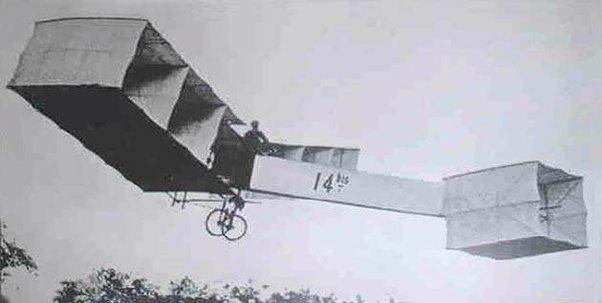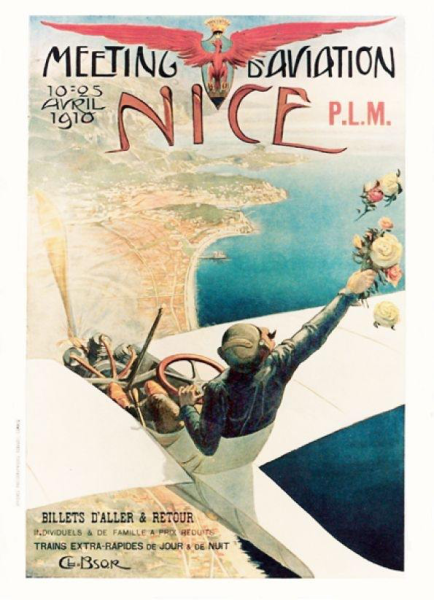An answer first published on Quora on January 3, 2015 with over 380,00 views and 1,100 upvotes. There is an interminably long and deep comment thread, some the new points they raise and my responses are at the end of this post. The main thing I haven’t brought over is the discussion on catapult launches, see the Quora comments for that.
It’s not just the Americans who believe that the Wrights were the first to fly a powered, heavier than air aircraft, remaining far ahead of European (including then resident in Paris Brazillian Santos Dumont) efforts to achieve the same even half a decade later.
The reported reactions of pioneer French aviators to Wilbur Wright’s demonstration flights outside Paris in August 1908 were as follows:
- René Gasnier: “We are as children compared to the Wrights!”
- Léon Delagrange: “We are beaten! We just do not exist!”
- Paul Zens: “Mr. Wright has us all in his hands. What he does not know is not worth knowing” [Gibbs-Smith Rebirth of European Aviation 1974]
“The French Senate extended an invitation to Wilbur and greeted him with a standing ovation. The frying pan Wilbur had used for cooking at his hangar improbably wound up in the Louvre.” [Crouch Bishops Boys]
Of course the French had pioneered lighter-than-air flight and went on to make many great contributions to the history of powered, heavier than air aviation, but at this point they were well behind the Wrights.
Firstly the French had thought that aircraft had to be designed with inherent stability – look at the huge dihedral and lack of ailerons on Dumont’s (a Brazilian) 14-bis for example, which flew in Paris three years after the Wrights:

The Wrights had realised before their first glider that roll control was required to turn, and were the first to give the pilot that control. Note the difference between Dumont’s No.19 (the first Demoiselle) and No. 20, built before and after Wilbur’s visit – the No. 20 was the first of his designs to have roll control, and later versions are widely regarded as classics of early aircraft design. The modern name for the control surface that makes an aircraft roll, “aileron”, is French.
Secondly the Wrights used a wind tunnel to scientifically investigate airfoil shapes for optimal lift/drag, and discovered the effect of aspect ratio (longer, thinner wings) in the improvements between the 1901 and 1902 gliders. The 14-bis and the Voison glider before it did not have shaped airfoils, but flew using Hargrave box kite cells (an invention from my hometown, Sydney Australia by the way – Lawrence Hargrave also invented the layout of the rotary engine, another staple of early aviation, although his was powered by compressed air).
Finally the Wrights were the first to understand that a propeller was a rotating wing, and that it should have an airfoil profile. The propellers on the 1903 first powered flight were almost as efficient as the best wooden propellers we can make today (around 70%) which is a brilliant achievement. Together with the efficient wing design it allowed the Wrights to fly on half the power (12hp) of Dumont’s 14 bis (24hp).
In summary, half a decade after the Wright’s first flight the French in no way could be said to have made the biggest discoveries regarding the airplane, and they said it themselves. Your premise is simply wrong. After Wilbur’s visit however, they made up for it in spades, and leapt well ahead of US aviation, to the point where only a decade later Americans flying in WWI were almost without exception flying French Spads and Nieuports. This was a truly amazing period in aviation – the French may not have invented the aircraft, but they made wonderful contributions to it’s development in science, industry and art, for which the French people should be proud (as Australians should be of Lawrence Hargrave and Harry Hawker — but I digress).
PS: The French are also responsible for an image which has been a favourite of mine since I was very young – it is framed on the wall behind me as I write:

PPS: Thanks for all the interest and comments. I have responded to some of them, but thought it would be more efficient to address some of the more repeated points here:
- This answer was originally for the question “Why do Americans believe the Wright Brothers invented the airplane when actually French aviators made the biggest discoveries?” and Quora asked me to move it to this question, which seems to have caused some confusion.
- For aircraft, my answer assumes human carrying powered, heavier than air flight independent of the ground, which is what the Wrights are credited with.
- Dumont was a Brazilian as I noted in my answer.
- Gustave Whitehead’s claim to first flight was first mentioned by Jonathan Smith. He kindly provided this reference [Wrong about the Wrights] which was an interesting read, based on research by Australian aviation historian John Brown. However I find this response by the Scientific American [Scientific American Debunks Claim Gustave Whitehead Was “First in Flight”] addresses the claims made by John Brown pretty succinctly. I would be interested in JB’s response to SA’s points.
- Opinion is not fact. Extraordinary claims require extraordinary evidence. I have been a keen reader of aviation history since I was a child. My answer is based on multiple, widely available references which themselves are based on contemporaneous accounts of what actually happened. Feel free to challenge my references for any of the statements that I’ve made and I’ll be happy to provide them, or own up to things that are my own opinion or interpretation. If you want to claim that something else is fact, then like Jonathan or the Richard Pearse supporters (thanks, see below) provide a reference to back up your claim. As far as I’m concerned, comments like “X was the first to fly” without references are tantamount to trolling.
- I have no time for conspiracy theories, especially when they show no sign of the comment’s author being aware of the original, widely available, recorded history version of events. The “real” history is a fascinating story, with crazy characters, missed opportunities, monsters, chases, escapes, true love, miracles… (hmm) and tons and tons of detail.
- As an antipodean myself I would dearly love Richard Pearse’s claim to be correct. The replica project video on Youtube is fascinating (although I don’t understand the claims about the Wrights having had government assistance and not building their own engine – Charlie Taylor built an engine specifically for the Flyer) and the engine design is a wonderfully inventive approach to getting a lot of power for little weight (the double-sided piston approach was used in steam engines, and the Junkers Juno 205 diesel used in German bombers in WWII had two pistons sharing a single cylinder). I haven’t seen anything to suggest that the replica got to more than a slow taxi under its own power, using a modern propeller. I understand the replica airframe is based on NZ patent 21476 that Pearse submitted in July 1906, but that no parts of the airframe survived or were photographed, and we don’t know whether or not this is the design that he flew, before or after the Wrights. I’d be interested to know if anyone has simulated or flown a model of this design successfully – to my eye it would be very unstable in yaw and pitch. However the elephant in the room, as Matt Conway, Paul Valentine and Andrea Little pointed out in the comments with this reference [When did Richard Pearse fly?], is that the only contemporaneous report of his flying, in a newspaper interview in 1909, has Pearse himself saying that he didn’t start working on his aircraft until 1904. For me personally this holds far more water than eye-witness accounts, given in good faith, but recounted half a century or more after the event.
- My original statement that the Wrights invented the wind tunnel was incorrect. See History of Wind Tunnels for a description of what the Wrights did with their wind tunnel in the context of previous experimenters.
I have now disabled comments (on Quora), for the last year or so there haven’t been any new questions, just assertions or repeats of questions elsewhere in the comments I have already addressed and provided references for multiple times, particularly about catapults: they flew multiple times without a catapult in 1904, and in the context of everything else they worked out (efficient airfoils and propellers, practical wind tunnels, three axis control, hundreds of sustained flights of long duration) years before Dumont you may as well say that the lack of landing wheels, tray tables or window shades disqualifies everyone who flew before Sikorsky… (waiting for flood of comments from the Sikorskyists).
